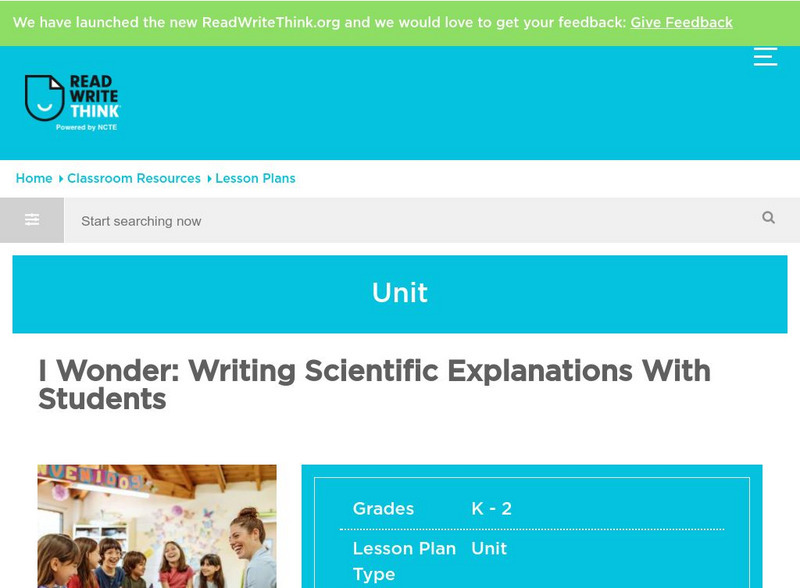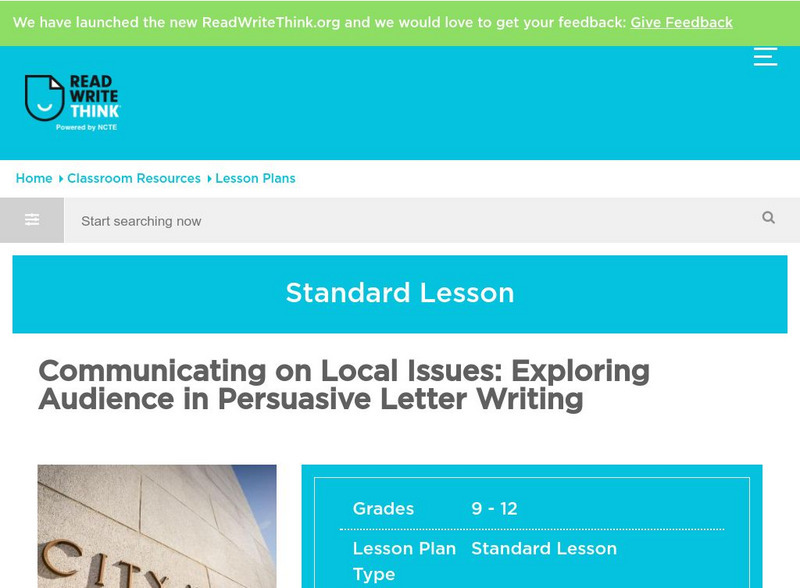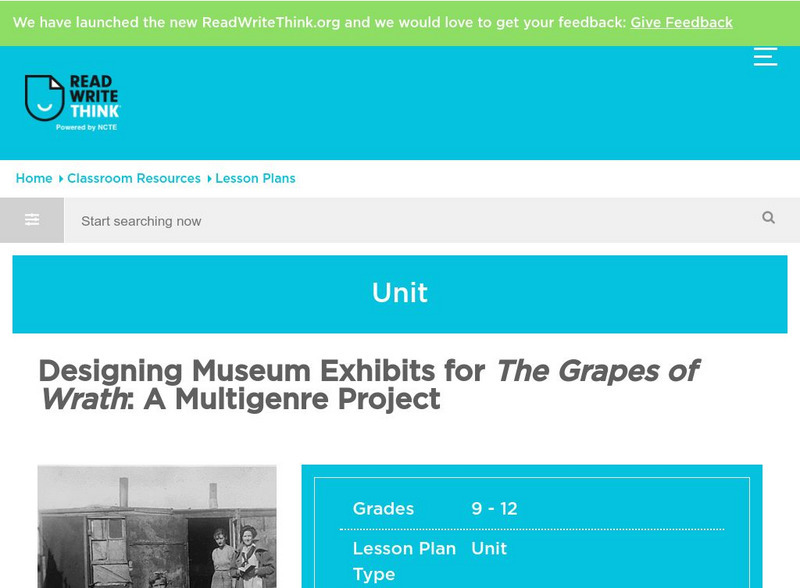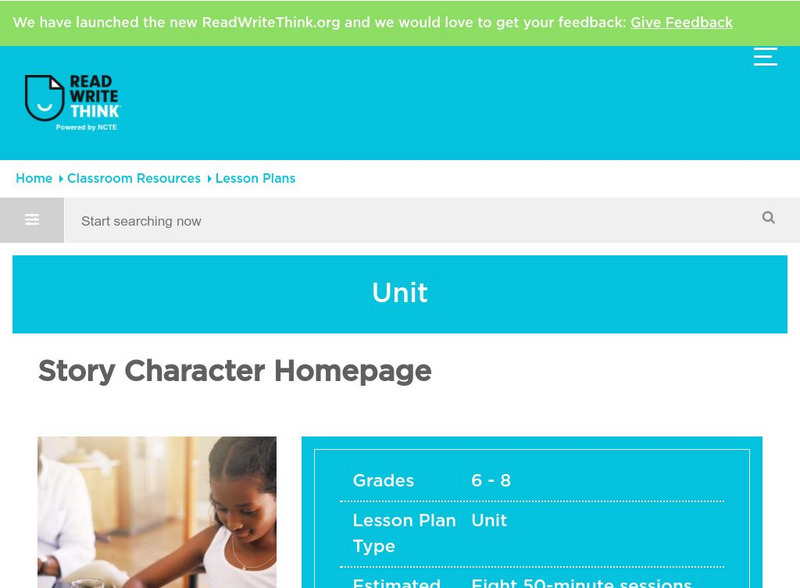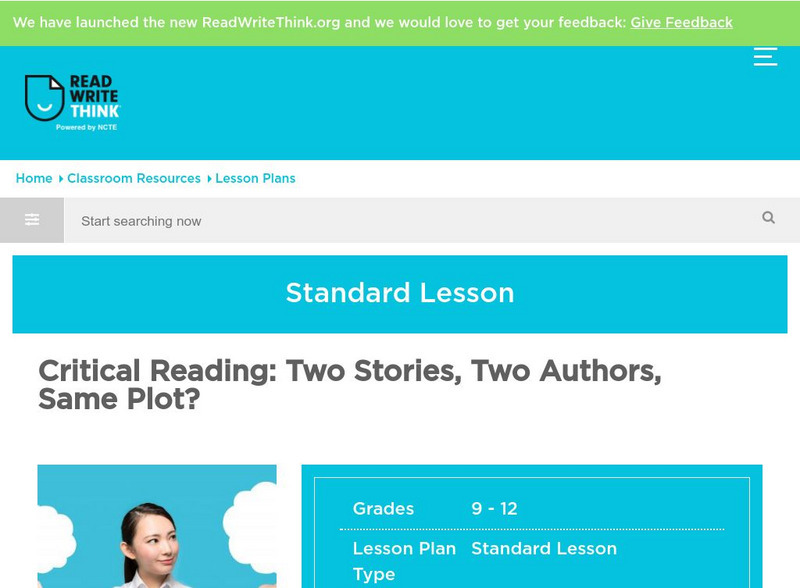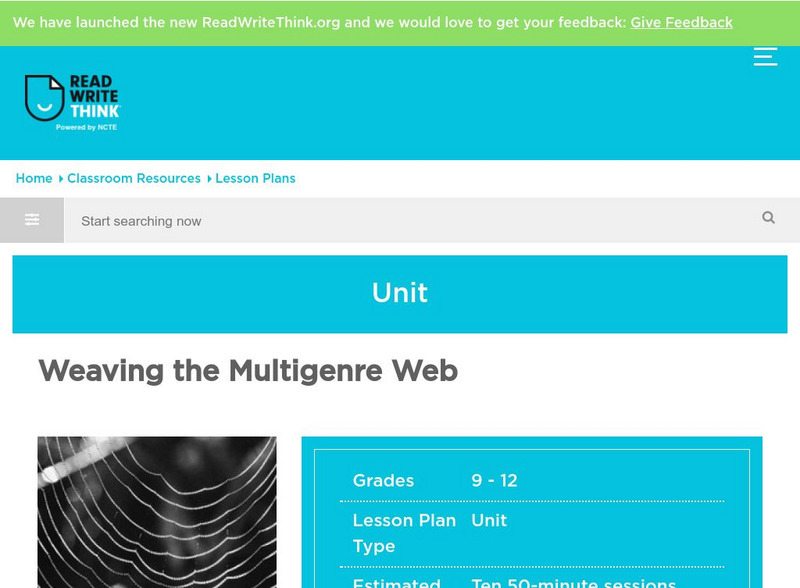ReadWriteThink
Read Write Think: The Two Voices of the Ow Spelling Pattern
Variable vowels are the focus of this lesson; students use nursery rhymes and ow to study how vowels can change their sounds according to different spelling patterns.
ReadWriteThink
Read Write Think: When I Was Young In, a Literature to Language Experience
Past meets present in this instructional activity in which students practice verb tense when they write personal short stories that they then publish in a flip book.
ReadWriteThink
Read Write Think: I Wonder: Writing Scientific Explanations With Students
Students choose a question to explore, research it using a variety of resources, organize their information on a TCF chart, and then collaboratively write a class scientific explanation.
ReadWriteThink
Read Write Think: Write Talks: Students Discover Real Writers/audiences/purposes
There's a world of writers out there, and in this lesson students discover them as they listen to presentations from local writers and learn about what, why, and how they write in their day-to-day lives.
ReadWriteThink
Read Write Think: Writing Workshop: Helping Writers Choose and Focus on a Topic
Students engage in writing workshop, using a timeline to focus in on and write about a specific event.
ReadWriteThink
Read Write Think: Graffiti Wall: Discussing and Responding to Literature
New ways of thinking about text, collaboration with group members, and presentation skills are all developed with this activity which could be applied to almost any novel read in class. Includes student handouts, an online interactive,...
ReadWriteThink
Read Write Think: Attn to Technology: Exploring a Fictional Technology Lesson Plan
Taking a critical look at our responses to technology and technological advancement is the intent of this ReadWriteThink instructional activity, designed for 3 50-minute classes. Includes student survey, handouts, interactive, and...
ReadWriteThink
Read Write Think: Family Memoir: Getting Acquainted With Generations Before Us
This very detailed lesson plan includes readings, discussion questions, handouts, interactives and a rubric, all aimed at helping students construct a themed memoir while documenting the artistic process they used to create it.
ReadWriteThink
Read Write Think: Exploring Audience in Persuasive Letter Writing
Effective communication skills are critical for the present century. This unit plan stresses clear, persuasive communication that is meant to be shared with an audience beyond the classroom.
ReadWriteThink
Read Write Think: Designing Museum Exhibits for "The Grapesof Wrath"
Integrating various creative formats with solid, researched fact, allows students to show what they have learned. The resulting "museum" can be shared with an audience in any of a number of ways. Includes handouts, rubric, and...
ReadWriteThink
Read Write Think: Composing and Performing Found Poetry
Excellent lesson plan that requires students to work collaboratively to select parts of poetry and "perform" poems for the class. Uses the book "Berenstein Bears," but any children's book could be acceptable for the lesson plan.
ReadWriteThink
Read Write Think: Using Narrative for Expository Text
Lesson in which students read various narrative texts which provide a context for them to learn content-area topics. Narratives allow the students to begin to understand expository texts.
ReadWriteThink
Read Write Think: Word Wizards: Students Making Words
Using four popular children's books, "Corduroy", "Franklin in the Dark", "The Very Hungry Caterpillar", and "Chrysanthemum", the Word Wizard interactive game builds vocabulary with related words. Each 30-minute lesson looks for patterns...
ReadWriteThink
Read Write Think: Story Character Homepage
Online lesson which allows for students to create an electronic "Home page," for a specific character when reading a class novel. Students research and create web pages, then present findings to the class.
ReadWriteThink
Read Write Think: W. Somerset Maugham
A complete multi-day lesson plan comparing a Maugham short story to one of the same name by Jeffrey Archer. Referenced to IRA/NCTE standards, it includes links to assessment sheets and handouts.
Quia
Quia: The Great Gilly Hopkins: Word Games
Do you like to play word games? This site offers you the opportunity to play several different games featuring the book "The Great Gilly Hopkins," by Katherine Paterson.
ReadWriteThink
Read Write Think: Inquiry on the Internet: Evaluating Web Pgs for Class Collection
A four-session lesson plan that leads to a class collection of resources is a solid introduction to both searching skills and evaluation. Could be used with any number of subject areas.
ReadWriteThink
Read Write Think: Weaving the Multigenre Web
Students analyze the elements of a novel in many different genres and then hyperlink these pieces together on student-constructed Websites.
PBS
Pbs News Hour Extra: Lesson Plan: Planets in Proportion
Students learn about the distance and relative size of the rest of the planets compared to the Earth and Sun. The lesson plan includes an assessment and extension activities.
PBS
Pbs News Hour Extra: The Iraq War (Students and Teachers)
This site provides coverage of the war with Iraq written for teens. Additional content includes student voices and forums.
National Health Museum
Nhm: Amino Acid Sequences Show Evolution
This lesson plan focuses on differences in the amino acid sequence of hemoglobin and myoglobin proteins. They use the number of differences to create a phylogenetic tree.
National Health Museum
Access Excellence: Molecular Biology/primate Phylogeny
This lesson plan involves comparison of amino acids to create a phylogenetic tree of primates. Learners will also use other species information to draw conclusions about evolutionary relationships.
ReadWriteThink
Read Write Think: Drawing and Writing Stories
Online lesson plan which allows elementary students to us the technique of drawing as a tool to create meaningful writing skills in fiction.
PBS
Pbs Teachers: Building Boxes [Pdf]
By determining the dimensions necessary for building a box with the greatest volume, students will explore the world of polynomial and rational expressions. Graphing calculators can be used for this activity.




